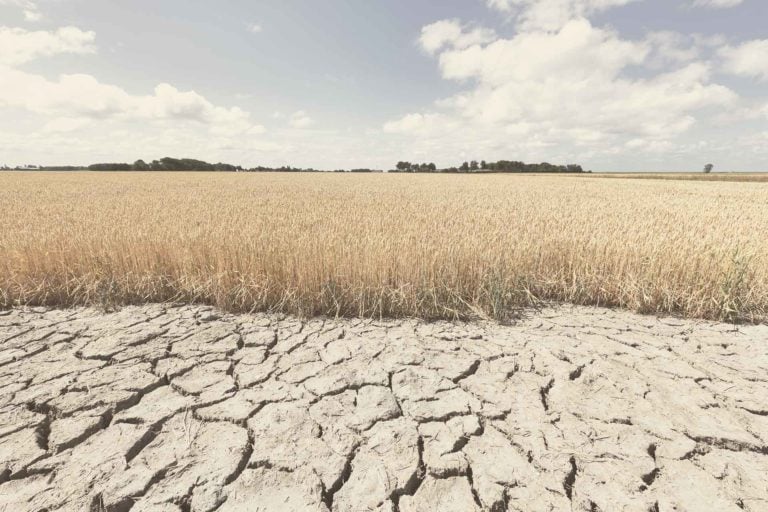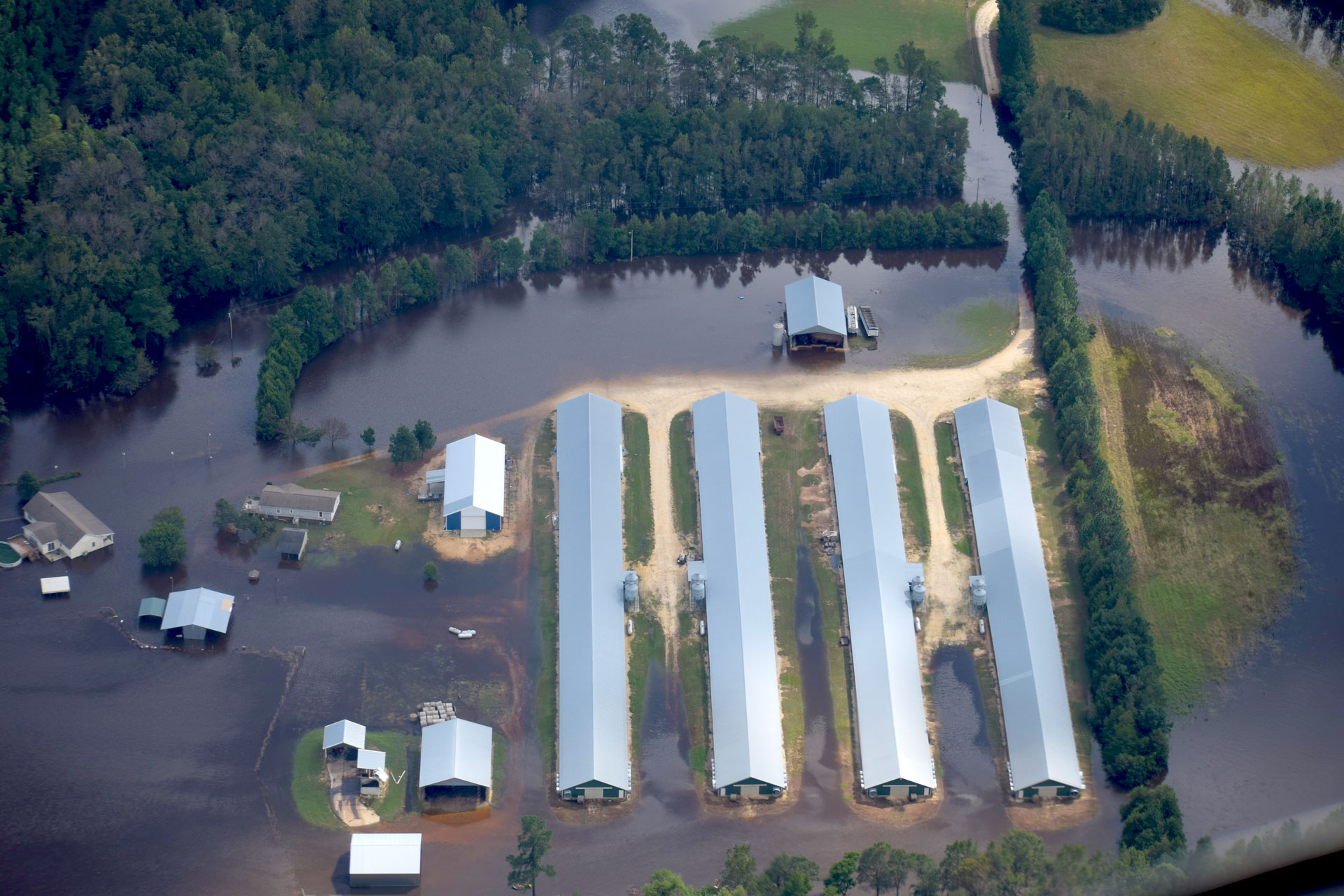What the IPCC’s Climate Report Tells Us about Reforming the Food System
Early this month, the Intergovernmental Panel on Climate Change (IPCC) released the third portion of their most recent report on climate change. The IPCC is a branch of the United Nations tasked with increasing our understanding of climate change, and this marks the last major portion of their sixth major assessment on global climate change, with a synthesis report on the three portions due for release in September 2022.
With the three sections totaling nearly 8,000 pages, the report is the most comprehensive assessment on climate change’s causes, impacts and solutions ever published. The report’s first two sections explored the most likely trajectories for a warming planet, outlining that humanity will likely have to adapt to even warmer temperatures than previously thought by the time we reach 2100. Even with swift corrective action, warming of at least 1.5 degrees Celsius is essentially unavoidable in the near future. This presents challenges for people around the world, particularly those in warmer climates and on coasts, where drought, intense heat, flooding and other disruptions will become even more common.
With the global food system representing nearly a third of greenhouse gas emissions annually, the report had a lot to say about how what we eat contributes to climate change. And given that farming is directly affected by climate disruptions, there are many ways that food production worldwide is threatened by warming temperatures. According to the report, the food system will have to adapt in order to keep a hungry planet fed. And while many of these changes aren’t simple, they offer opportunities to help mitigate climate change and correct some of the foundational injustices in the global food system. Ultimately, the report validates the kinds of policy changes that advocates for fairer and more sustainable food systems have been advancing for years, while also calling out false solutions put forward by global agribusiness interests.
How Climate Change Will Impact Food Production
The report’s second section outlined the various ways that climate change will alter natural and human-made environments. Food production, which sits in between the two, will be one of the most vulnerable sectors. While most of the major challenges the report describes are already here — drought, extreme heat, intense storms and more — the new report upgraded the severity of these events and the likelihood that they would impact ecosystems and communities all around the globe, casting doubt on the optimistic popular misconception that climate change might actually help some areas become more liveable or agriculturally productive.
While land-based agriculture seems like it would have the most to lose from rising temperatures and drought, the oceans are even more vulnerable to damage from warming. The report outlines how warming can spur enormous biodiversity losses in the oceans, whether through slow changes in nutrient cycles, or through dramatic changes like widespread coral bleaching that threaten to eliminate ecosystems like Australia’s Great Barrier Reef. This puts fisheries and the millions of people who rely on them at great risk.
Overall, more than 3 billion people live in areas that are highly vulnerable to climate change. Many live in the Global South, where complex histories of colonialism and exploitation mean that infrastructure, particularly food infrastructure, is often inadequate. But in a global food system, disruptions anywhere can have a big effect on food prices, as we are seeing currently with the combined effects of a war in Ukraine and a global supply chain crunch. As climate-related disruptions mount, it’s critical that food production and distribution adapt to the changing climate.
How Food Systems Can Adapt to a Warmer Planet
A more resilient food system should be able to weather shocks and keep feeding people, so our food system needs to adapt to the elevated risks posed by climate change. Both on and off the farm, a lot of the work lies in managing water resources. Building more efficient irrigation — as well as reconsidering water-intensive farming in dry areas — can do a lot to reduce agriculture’s water footprint. Paying attention to natural waterways, especially wetlands, can also help secure farmland from risks associated with flooding both near and far from coasts and large waterways.
One of the most critical components of drought resistance is healthy soil. Well-structured, biodiverse soil with a large percentage of organic matter acts as a sponge for growing crops, absorbing water in times of excess and storing it for drier periods. But with its synthetic chemicals that hurt soil microbial communities and its reliance on heavy plowing, industrial agriculture generally degrades soils and leaves them more vulnerable to climate shocks. Building up soil health with cover crops, diverse crop rotations and other practices is a key adaptation strategy. These ecosystem-based approaches minimize farms’ chemical use while making them more resilient to disasters.
The report also highlights the importance of ecosystem-based management strategies for fisheries, where regulators set dynamic catch limits that respond to changes in the ocean. It also stresses the need for more conserved areas in the ocean where fish and other marine life can recover without pressure from fishing.
How Sustainable Food Systems Can Help Alleviate Climate Change
Building resilience against a changing climate is only a half of the puzzle. The report’s third section focuses on mitigation strategies, going beyond adaptation to reduce emissions and eventually lower the concentration of greenhouse gases in the atmosphere through changes to land use and forestry.
Reducing and reversing tropical deforestation are some of the most important goals laid out by the report, and much of that deforestation is driven by the industrial food system as forest becomes pasture for cattle or cropland for soy and oil palm. Rainforests aren’t the only carbon-rich, biodiverse habitat threatened by agricultural expansion: preservation of wild lands around the world, especially wetlands and grasslands, is key to slowing climate change.
Considering the world’s rising population and the urgent need to stop agricultural expansion onto new land, the IPCC highlights two paths for solutions. Demand-side solutions — changing the way we eat — is key to reducing the pressures that accelerate habitat loss. Shifting diets away from animal products and processed foods is central to this strategy, because meat and dairy products have a bigger land footprint than plant based foods regardless of how they’re raised. Reducing food loss and waste at every step of the supply chain, from farms to homes, can also help cut back on the amount of new land we need to grow food while reducing emissions from decomposing food waste.
Shifting demand can only do so much to reduce agriculture’s pressures on the environment, and that’s where supply-side solutions, or changes to the way we produce food, come in. The ultimate goal is using less land to produce more food. Food system experts, policymakers and agribusinesses have debated what qualifies as “sustainable intensification” for years: while many countries around the world have highly productive, “intensified” agricultural systems, they aren’t always doing so sustainably. Approaches like factory farming of animals or monoculturing crops like corn can appear efficient on paper while creating pollution and other problems for the environment.
Thankfully, the IPCC offers some clarity on the issue, again returning to their ecosystem-based management approach. In their view, sustainable intensification relies on complex agroecological systems, where crops and beneficial organisms work together to provide nutrients and reduce pest pressure with minimal chemical inputs. This includes approaches like agroforestry, silvopasture and managed grazing, which incorporate trees and animals into these systems to maximize their ecological benefits.
While it’s clear that food systems have a pivotal role to play in mitigating climate change, the report offers a much needed-reality check: no amount of natural carbon sequestration can fully offset the greenhouse gas contributions of other sectors. Still, they represent one of the most cost-effective strategies for reducing emissions simply because the tradeoffs they offer are productive.
Self-sufficient Agricultural Communities Can Meet Climate and Development Goals
Many of the changes recommended by the IPCC, specifically those that center agroecological approaches, appear as both adaptation and mitigation strategies, and the report highlights these approaches as unique opportunities. Because the goal of agroecology is reducing reliance on outside inputs and lightening agriculture’s load on the environment, it can help make agricultural communities around the world more self-sufficient and less prone to collapse as supply chain disruptions due to climate change become more and more common.
But the opportunities to improve the food system go beyond climate by tackling some of the world’s more foundational equity challenges. Among all the climate change adaptation strategies outlined by the IPCC, those dealing with the food system had the most opportunities for synergy with the UN’s Sustainable Development Goals. Reshaping agriculture towards community-based agroecology can offer better livelihoods for people in low-income countries, expand economic opportunities for women and bring much-needed food security, for example.
The reports also outline several “maladaptive solutions:” options that might appear to help reduce emissions but that conflict with other goals. While they might bring short term gains, many of these strategies rely on weak points in broken systems rather than attempting more foundational change. In agriculture, these maladaptive solutions are often greenwashing attempts from agribusiness lobbies, such as biofuels that rely on monocrop production (ethanol and biodiesel), for example, or using anaerobic digesters to turn factory farm manure into so-called “biogas.” In both cases, the strategies achieve an emissions reduction on paper, but rely on systems that shouldn’t exist in the first place because they are so out of scale with the environments and communities around them.
The eagerness with which agribusinesses advance these false solutions is matched only by their fear of more foundational change. Community-based restructuring of food systems requires enormous policy shifts, including land reform, strengthening of Indigenous people’s rights and territories, changes to crop subsidies and more. These represent a big threat to corporate food and agriculture interests, which have lobbied to block a wide range of attempts to make food and agriculture policy more sustainable, from eliminating sustainability recommendations in the USDA’s dietary guidelines to blocking the EPA from enforcing clean water regulations on farms.
The IPCC report frames the climate change more starkly than any other preceding reports, and people are responding, with protests across major cities calling for more action. While it’s clear food systems are only part of the problem, they’re an integral part of any solution, and acting on them now is key to not only slowing emissions, but also to building a fairer world.
Get the latest food news, from FoodPrint.
By subscribing to communications from FoodPrint, you are agreeing to receive emails from us. We promise not to email you too often or sell your information.
Top photo by Serjik Ahkhundov/Adobe Stock.
More Reading
Can extended producer responsibility programs push food companies to use sustainable packaging?
October 16, 2025
The meat industry smeared the Planetary Health Diet. Now its creators are back with more evidence.
October 10, 2025
The latest Global Plastics Treaty talks failed. Where does that leave the plastic pollution crisis?
September 23, 2025
For these cocoa farmers, sustainability and the price of beans are linked
September 17, 2025
This fall, get involved in one of these campus sustainability initiatives
August 26, 2025
What we’re reading this summer
July 17, 2025
A new book says tech-supported industrial ag will feed the world. Agroecologists would like a word.
July 9, 2025
Use a grocery store trip to teach kids environmental stewardship
July 7, 2025
Can rye growers get consumers and retailers excited about rye?
May 19, 2025
Can private grants fill regenerative agriculture's federal funding gap?
May 1, 2025





